
Background:
As highlighted in the Envvia case study, I attendied two of the world’s largest jewelry trade shows. Given the industry’s deep-rooted traditions, it has lagged in technological innovation. This created an ideal environment for my company to identify new opportunities.
At my design consultancy, I’ve been experimenting with AI-driven prototypes and identified several potential ways to enhance the attendee experience. To validate these ideas, I needed to conduct further user research.
User Research & Persona Development:
Upon returning to the US, I arrived just in time to attend the largest jewelry show in the country, The JCK Show. This event provided an excellent opportunity to engage with attendees. Over the course of a week, I conducted 17 interviews, aiming to speak with at least five individuals from each category, excluding jewelry designers and brands.
From this data, I created 3 personas:
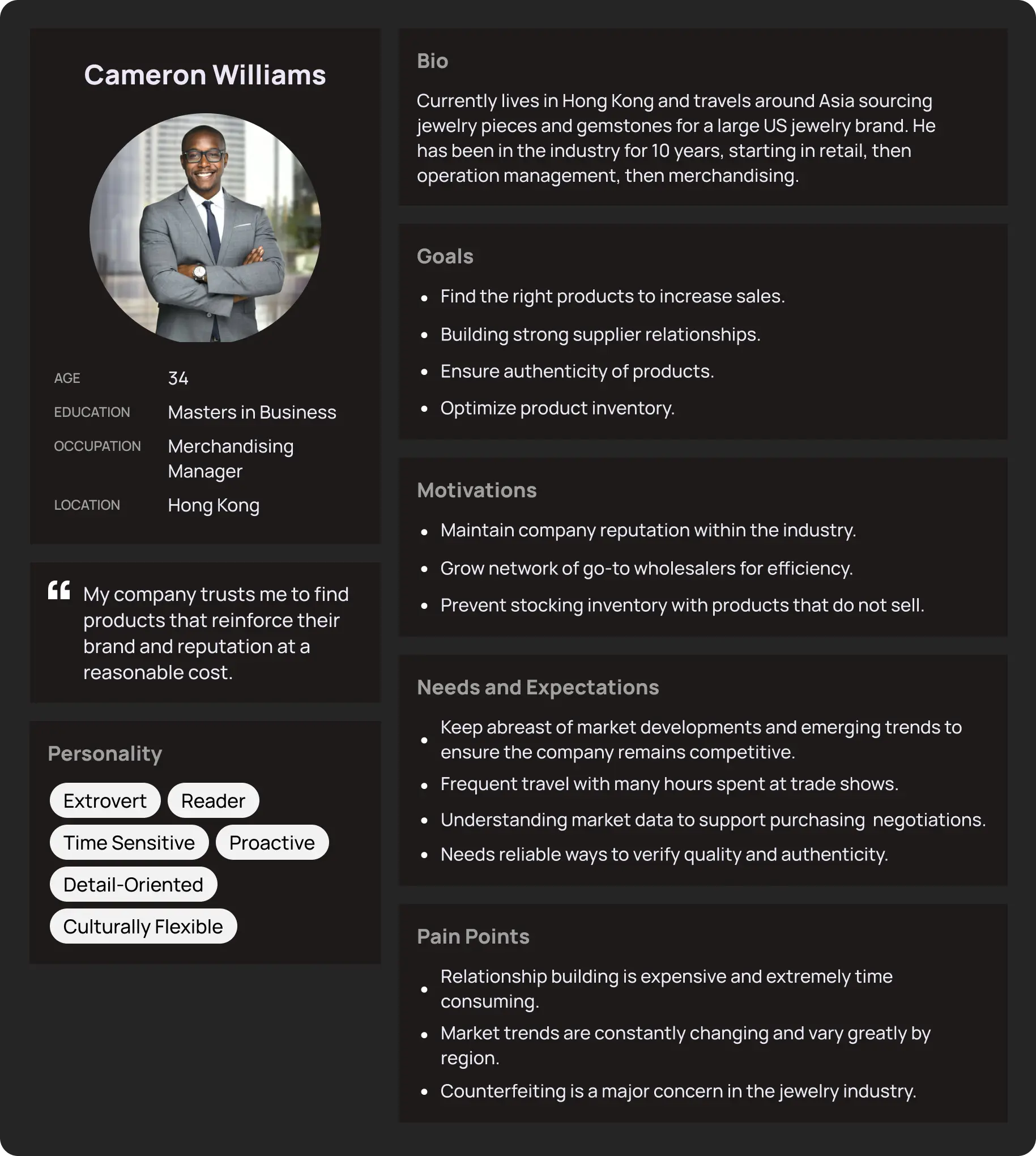
(View Full Image)
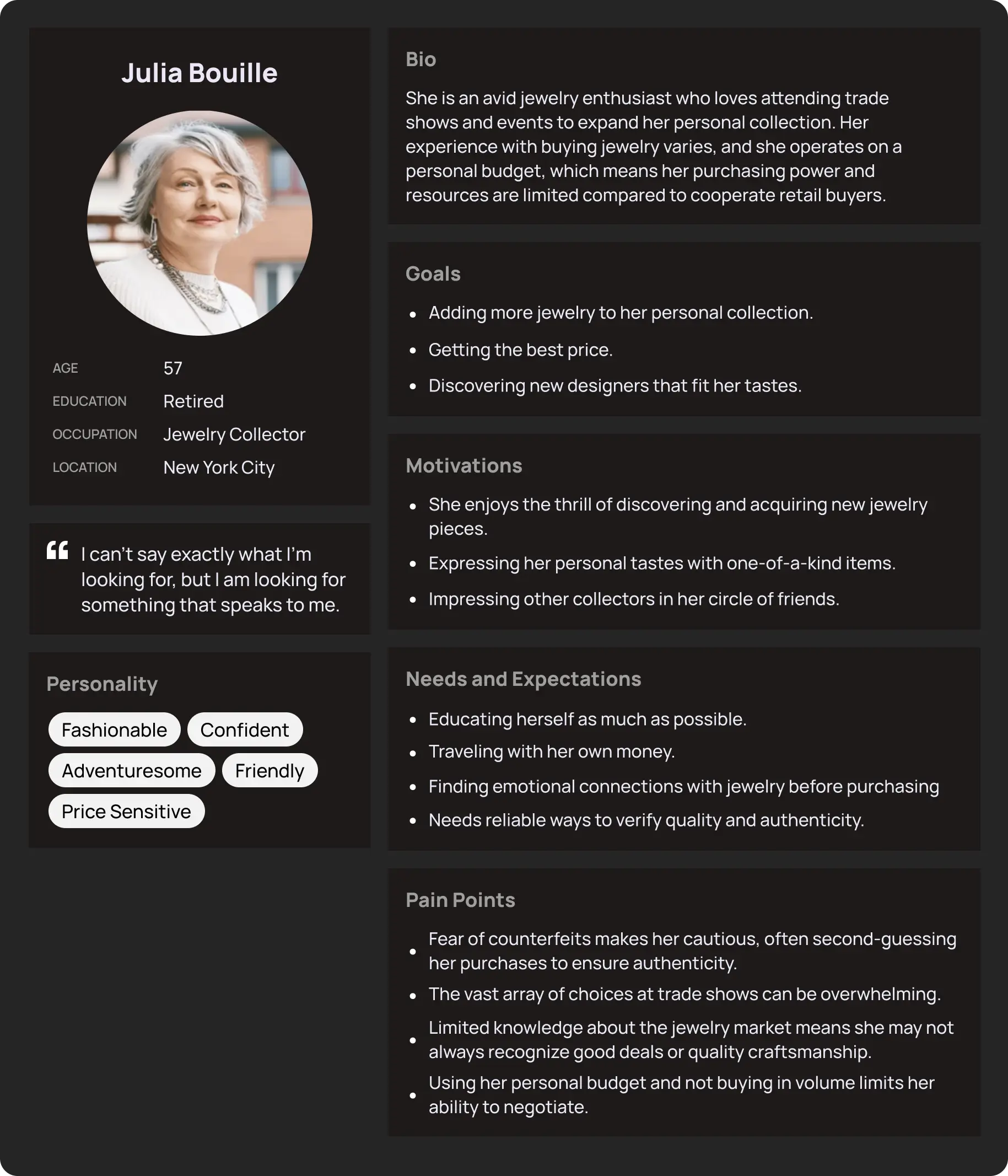
(View Full Image)
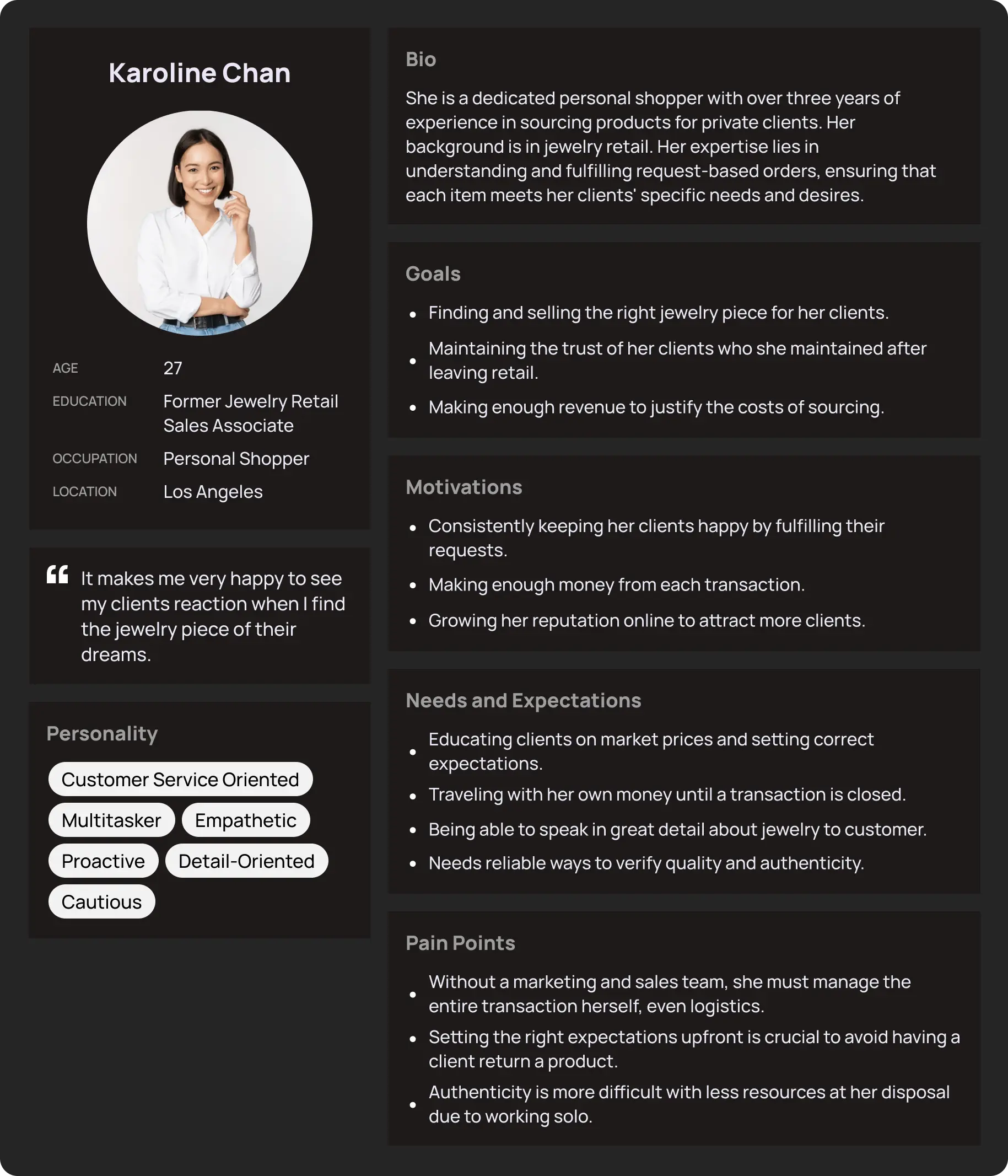
(View Full Image)
User Journey Maps:
As you can see, there are some commonalities in their pain points. To delve deeper into their experiences, I created journey maps for each persona. These maps centered around a common goal: finding a specific piece of high jewelry, which emerged as a shared objective among the people I interviewed.
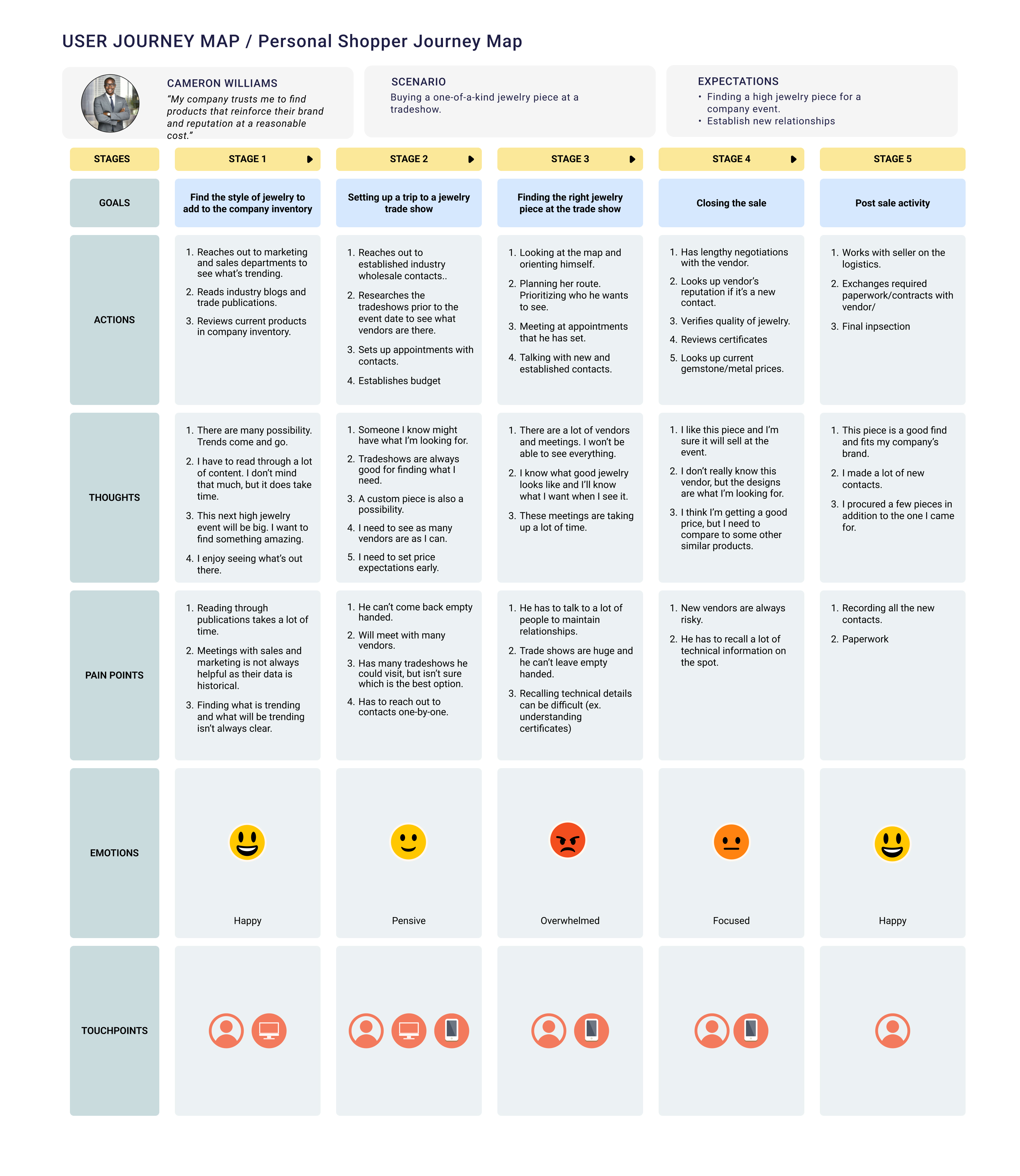
(Click to Enlarge)
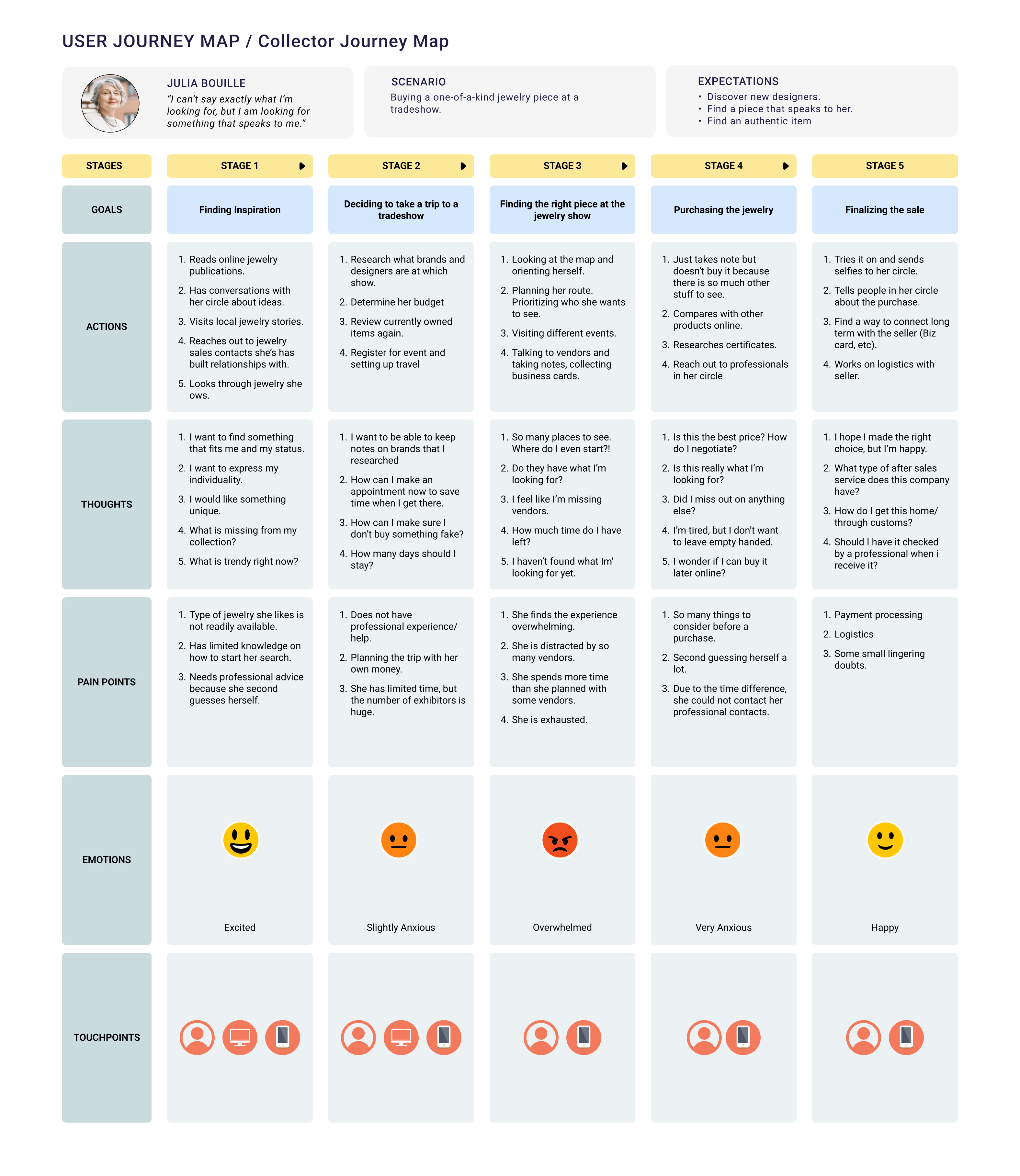
(View Full Image)
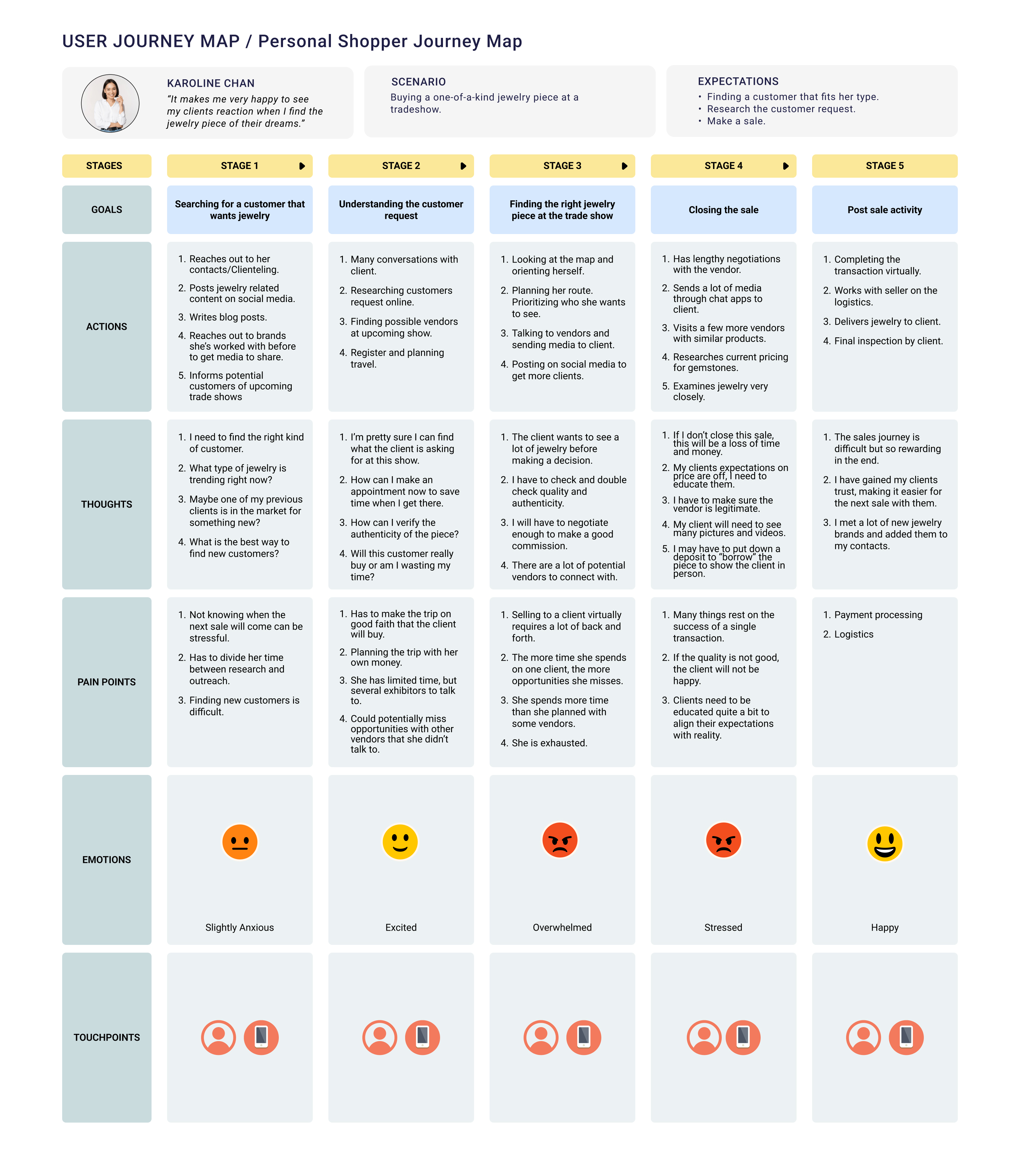
(View Full Image)
In the user journey, I see a few common themes at the same stages.
- Time is limited - Due to the show's vast scale or time spent with a vendor, all attendees feel the pressure of limited time.
- Lack of information - Everyone needs a certain level of technical knowledge both before and during the point of purchase.
Technical Considerations:
Although it's early in the process, I believe it's important to consider a few technical challenges that might arise later, particularly when the persona interacts with a mobile device touchpoint as that is the primary touch point during the stages in question. While some may see this as an opportunity to develop a native app, I typically lean towards progressive web apps (PWA) instead. Below are my reasons why I believe this approach is better suited for the situation.
| Advantages | Details |
|---|---|
| Cross-Platform Compatibility | PWAs work across different platforms and devices, providing a consistent experience without the need to develop separate apps for iOS, Android, or other operating systems. This can significantly reduce development time and costs. |
| Ease of Deployment and Updates | PWAs are hosted on the web, so updates are immediate and don't require users to download new versions from an app store. This makes maintenance simpler and ensures that all users are always on the latest version. |
| No App Store Approval Needed | PWAs don't require approval from app stores, which can sometimes be a lengthy and uncertain process. This allows for faster deployment and easier distribution directly through a URL. |
| Improved SEO and Discoverability | Since PWAs are web-based, they are indexed by search engines, improving visibility and discoverability compared to native apps, which are typically found only through app stores. |
| Avoids App Fatigue | App fatigue is the growing reluctance to download and manage multiple apps, leading to decreased user engagement with new native apps. PWAs address this by offering instant access without installation, reducing storage demands and simplifying the user experience. |
Wireframing:
Now it is time to work on some ideas about what this interface will look like and how the user will interact with it. Wireframes will be coming soon...
< Previous Case Study: Accessibility Governance - Heuristics and Design